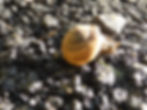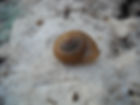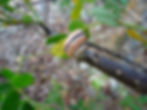
Shell-ebrating Bahamian snail diversity

Molluscs are a highly diverse group of invertebrates, with over 86,600 recorded species worldwide. Notable molluscan classes include Gastropoda (snails and slugs), Bivalvia (clams, oysters, mussels, and scallops), and Cephalopoda (octopuses, squid, cuttlefish, and nautiluses). In terrestrial environments, snails and slugs dominate as the most prominent molluscs.
Gastropoda is the largest and most varied class within the phylum Mollusca, and is divided into six subclasses: Caenogastropoda, Heterobranchia, Patellogastropoda, Vetigastropoda, Neomphaliones, and Neritimorpha. The latter four groups are marine snails, while the former two are a mixture of terrestrial, aquatic, and marine species. Within the class Heterobranchia are most of the terrestrial snails and slugs. It is estimated that there are currently over 28,895 species of terrestrial gastropods.
In the West Indies, terrestrial snail diversity is rich. In Jamaica, for example 562 species have been recorded, of which 500 species are endemic to the island. Sadly, the terrestrial malacofauna (i.e. snail fauna) of The Bahamas has not been properly assessed. Groups like the genus Cerion have been studied in depth, and are probably the most species-rich taxa with some estimates of over 600 possible species. However, other researchers conservatively asserted 134 species were distinct enough to warrant specific names, and MolluscaBase currently lists over 290 accepted species. Also, due to the high variability in shell morphology, it is difficult to determine species by shell structure alone.
At least 18 other land snail species have been documented in The Bahamas, including Tree Snails, Seagrape Snails, Unicorn Snails, and Oily-shell Snails. Further research is needed to fully understand the region’s malacofauna.

Brown Fortune Snail
Leather Leaf slug
Slugs
Like snails, slugs are a type of gastropod which over the course of its evolution, gradually lost its shell or its shell was greatly reduced. The internal organs of the slug, which was located within the protected shell of snails, now is incorporated within the head and tail.
Slugs do not form a monophyletic group but are rather are a polyphyletic group with species showing similar features due to convergent evolution. Despite not having a shell, slugs have been observed to be more adaptable than snails and are able to occupy a wider range of habitats. Slugs are more tolerant of water loss than most snails and the lack of a shell also decreases the need for calcium.
Slugs are herbivores, detritivores, and carnivores depending on the species.


fact sheets

COMING SOON!

COMING SOON!

COMING SOON!

COMING SOON!


posters

Snails and slugs are part of a huge group of molluscs called gastropods. The Bahamas has many species of terrestrial snails but most are poorly studied. One group, the Cerions (peanut snails) have been heavily studied and have been used to help scientist understand disciplines such as evolutionary biology. Snails although interesting animals can be pests to humans as some species feed on fruit and vegetables and some species are vectors for diseases like liver flukes. Other species like our Seagrape snails have beautiful shells of various colours that are a must for shell collectors. Unfortunately, Bahamian snails are not protected by law so their is a danger of some species being harvested to be used as trinkets for tourism.

COMING SOON!

COMING SOON!

COMING SOON!


photo gallery


resources
Brown, K.M. and Lydeard, C., 2010. Mollusca: gastropoda. In Ecology and classification of North American freshwater invertebrates (pp. 277-306). Academic Press.
Capinera, J.L. and White, J., 2011. Terrestrial snails affecting plants in Florida. Publication number EENY-497. Gainesville: Department of Entomology, University of Florida.
Cockerell, T.D.A., 1902. The Evolution of Snails in the Bahama Islands. Nature, 66(1698), pp.56-56.
MolluscaBase eds. 2025. MolluscaBase. Accessed at https://www.molluscabase.org on 2025-05-12. doi:10.14284/448
O’Brien, M.F. and Pellett, S., 2022. Diseases of Gastropoda. Frontiers in Immunology, 12, p.802920.
Rosenberg G, Auffenberg K, Bank R, Bieler R, Bouchet P, Herbert D, Köhler F, Neubauer TA, Neubert E, PállGergely B, Richling I, Schneider S. 2022. Adapting mark-recapture methods to estimating accepted species-level diversity: a case study with terrestrial Gastropoda. PeerJ 10:e13139 DOI 10.7717/peerj.13139
South, A., 2012. Terrestrial slugs: biology, ecology and control. Springer Science & Business Media.





